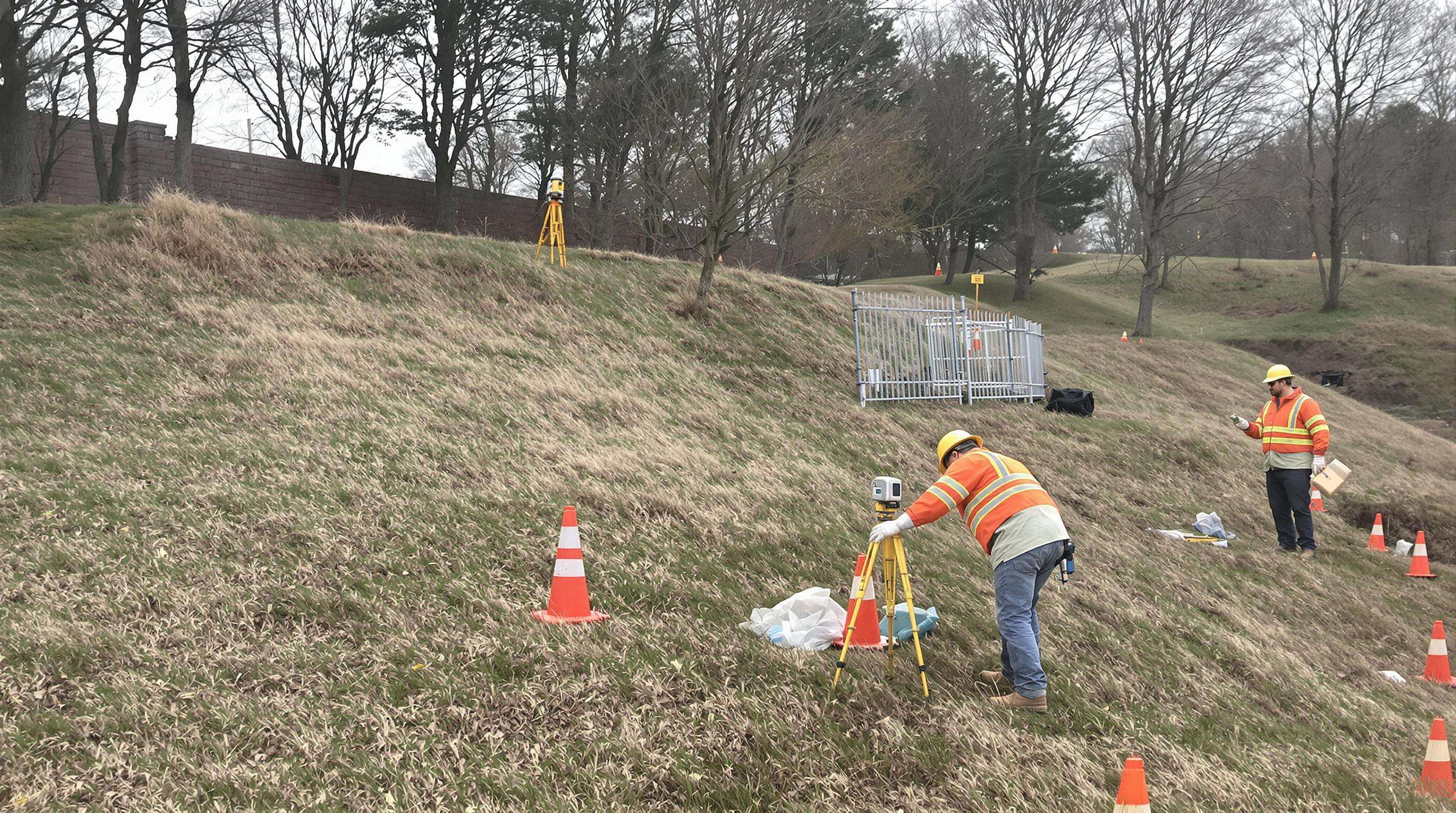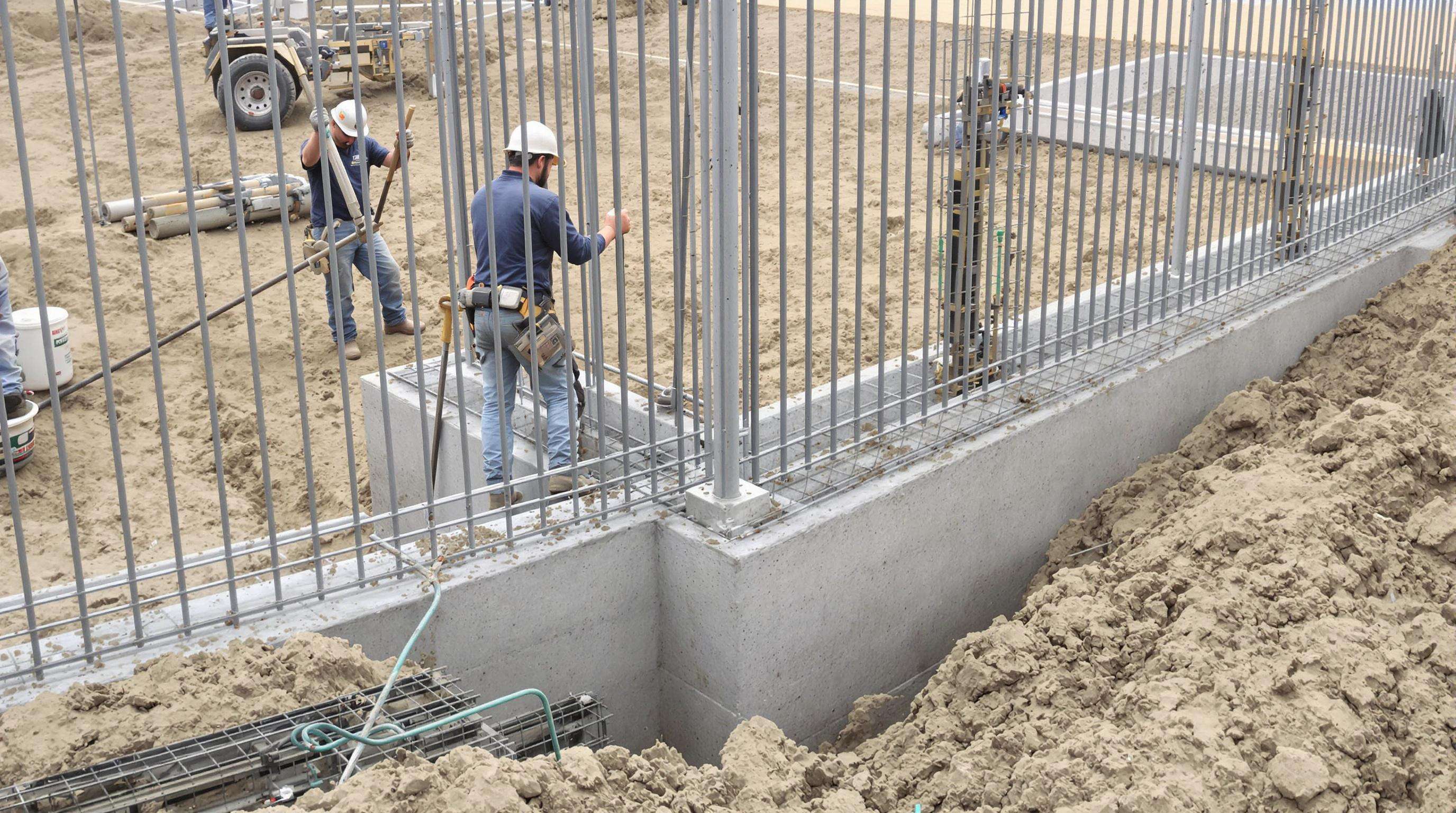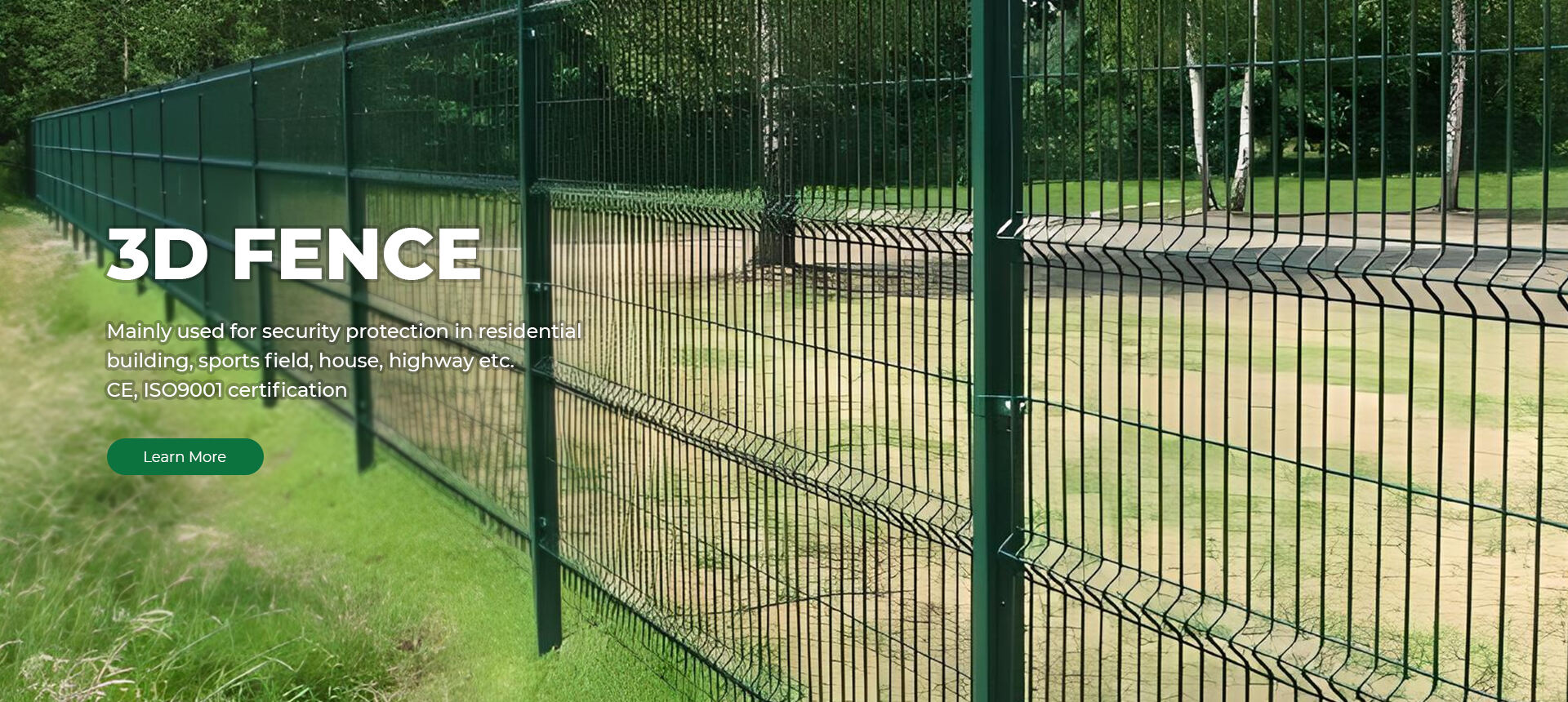Understanding the 358 High-Security Fence and Its Applications
What Are 358 Security Fences?
Security fence model 358, often called anti-climb or prison style fencing, consists of strong perimeter barriers made from steel wires welded both vertically and horizontally. With an aperture size standardized at around 76.2mm by 12.7mm, these openings are simply too tight for anyone trying to get a grip or attempt forced entry through cutting methods. The wire thickness measures approximately 4mm, which stands up pretty well against bolt cutters. What makes this different from regular chain link fencing? The full welding creates a grid pattern that spreads impact forces throughout the entire structure. This design gives it roughly three times better resistance against break-ins compared to standard options, meeting requirements outlined in the ASTM F2843-10 security fencing standards.
Key Features of the 358 Fence for High-Security Environments
- Tamper-proof construction: Continuous welds at every intersection eliminate weak points vulnerable to prying.
- Corrosion resistance: Galvanized or PVC-coated steel ensures durability in harsh environments, with a service life exceeding 20 years.
- Anti-climb design: Apertures under 100mm comply with ISO 13482:2014 requirements for anti-scaling barriers.
These attributes make 358 fencing ideal for high-risk sites such as airports, utility substations, and data centers, where maintaining perimeter integrity is critical.
Common Applications in Military, Industrial, and Correctional Facilities
More than seventy percent of federal prisons across the United States have opted for 358 fencing because it stands up pretty well against people trying to break in. The military also makes good use of this type of fencing around their bases to protect important equipment and buildings. Industrial sites install it too when they need to keep dangerous materials or expensive stuff safe from prying eyes. Prisons especially appreciate what they call the zero sightline feature of these fences. Without being able to see through them, inmates find it much harder to coordinate with folks outside the facility or pass illegal items back and forth.
Site Preparation and Layout Planning for 358 Fence Installation

Conducting a Comprehensive Site Survey
Getting a good look at the site before installing a 358 fence makes all the difference in how well it works. Surveyors need to map out any hills or dips in the ground, find where pipes and cables run underground, and check if the soil will hold up over time. When dealing with really secure areas, experts spend extra time looking for trouble spots too - places where someone might sneak through or where visibility drops off completely. They want to put the fence where it matters most. According to some recent research from the Perimeter Security Journal last year, folks who use GPS mapping instead of old fashioned measuring tapes end up with about 32% fewer mistakes in their measurements. That kind of accuracy just makes sense when security is on the line.
Ground Preparation and Obstacle Assessment
Once the survey work is done, it's time to get the ground ready. Start by flattening out any bumps and clearing away all the junk lying around. For spots where the soil is full of rocks or constantly soggy, adding some gravel behind the posts really helps keep them from shifting around later on. Don't forget about those pesky tree roots growing through the area or old foundations that might be in the way either. Uneven ground creates problems down the road because gaps form between sections, which makes the fence easier to climb over than it should be. Putting in good drainage while preparing the site goes a long way toward stopping erosion issues years from now. A simple French drain system works wonders for most backyard installations.
Marking Layout and Ensuring Compliance with Local Regulations
To get everything set right, folks usually go with spray paint or wooden stakes when marking where posts and gates should go. Most people stick with around 8 to 10 feet apart for those 358 systems, though local conditions might call for something different sometimes. Before digging in, check what the neighborhood rules say about setbacks and such things. Also important are emergency access points and environmental protections that apply in certain areas. For installations at military bases or prisons, there's often an extra step involved. These places typically need independent inspectors to test how well structures hold up against blasts or forced entry attempts. Makes sense really, given the security concerns at such locations.
Installing Posts and Foundations for Maximum Stability

A good 358 fence stands or falls based on how well those posts get installed and what kind of foundation they sit on. Most folks go with either steel or concrete for their posts, usually keeping them spaced around 8 to 10 feet apart so nobody can just cut through or climb over easily. Now when it comes to corners and gates, these spots need something stronger than regular posts. Many builders opt for 4 inch schedule 40 steel there because those areas take a lot of sideways pressure plus all the wear and tear from opening and closing gates repeatedly throughout the day.
Selecting Proper Post Types and Spacing for 358 Fence Systems
Choosing the right posts depends on what kind of soil we're dealing with and how serious the security threats are. Galvanized steel works great when there's corrosion around, whereas those concrete filled ones pack more weight which helps them stand up better against impacts. When setting up fences for areas needing at least P3 security standards, cutting down the distance between posts to about six to eight feet makes sense because it stops panels from bending too much. According to some industry numbers floating around, wrong spacing causes roughly a quarter of all fence problems in places where winds get really strong.
Digging Post Holes and Concrete Foundation Guidelines
Excavate holes to a depth of at least 24–36 inches (1/3 of post length) and 12 inches in diameter to resist frost heave. Use a 3,000 PSI concrete mix, poured in layers to prevent air pockets. In unstable soils, helical anchors or bell-bottom footings can increase load-bearing capacity by up to 40%.
Ensuring Alignment and Leveling During Installation
Use laser levels and string lines to maintain alignment, allowing no more than 1/8" deviation per 10 feet. Misaligned posts place undue stress on mesh panels, creating potential weak points. Temporarily brace posts to ensure they remain plumb (within ±2°) during concrete curing.
Curing Time and Structural Integrity Checks
For concrete to reach about 80% of its full strength, it needs at least three days of proper curing when temperatures stay above 60 degrees Fahrenheit. Rushing the process by putting weight on it too soon often leads to tiny cracks that weaken the structure over time. Once the curing period is complete, there are several ways to check if everything went right. Start with lateral load testing using no less than 200 pounds of force according to ASTM F2656 standards. These tests help determine how well posts hold up under stress. Also important are ultrasonic scans which look deeper into the material to spot signs of corrosion before they become serious problems down the road.
Attaching and Tensioning 358 Fence Mesh Panels
Handling and Positioning 358 Fence Mesh Panels
Unroll 358 mesh carefully along the rail line, using two workers to prevent distortion—a leading cause of installation errors in perimeter systems. Position the mesh with the diamond pattern oriented vertically and maintain a minimum 25mm clearance from the ground to reduce corrosion and contact damage.
Securing Panels with Compatible Rail Profiles
Attach the mesh to horizontal galvanized U-brackets spaced every 300mm to prevent the "drum effect," an imbalance that can reduce intrusion resistance by up to 40%. All fasteners should face inward to eliminate external tampering points.
Tensioning Techniques to Prevent Sagging and Intrusion
Apply progressive tension using ratchet tools, starting from the center and working outward. Maintain a tension of 45–50N, as measured by a digital tensiometer; exceeding 60N risks permanent wire deformation. Properly tensioned installations experience 67% fewer breach attempts than slack configurations.
Balancing Tension and Structural Stress in 358 Fence Systems
Account for thermal expansion by leaving 10mm gaps at terminal posts during summer installations. In cold climates, increase initial tension by 15% to compensate for metal contraction. Perform quarterly tension checks, as environmental exposure can lead to up to 12% tension loss annually.
Gate Integration, Fasteners, and Final Maintenance Steps
Types of Security Gates Compatible with 358 Fence Systems
Integrate heavy-duty sliding or swing gates that match the 358 fence’s 76.2mm × 12.7mm aperture for consistent security and appearance. Sliding gates are suitable for wide openings, while articulated swing gates work well in confined spaces. Both must be rated to withstand equivalent forced-entry threats as the fence.
Reinforced Post Support for Gate Durability
Gate posts require footings at least 30% deeper than standard posts to handle operational stress. For example, use 150mm x 150mm steel posts with 800mm concrete foundations to prevent sagging. Confirm vertical alignment with a laser level during curing to ensure long-term performance.
Alignment and Operational Testing of Gates
Cycle the gate 10–15 times post-installation to detect binding or misalignment. Adjust rollers and hinges until operation requires no more than 5N of force. For automated systems, ensure obstruction sensors activate within 0.5 seconds to meet safety standards.
Using Tamper-Proof Fasteners for Enhanced Security
Secure all critical connections—gate hinges, latches, and rail joints—with stainless steel M10 security bolts featuring shear heads, which resist tampering and withstand up to 4,500N of shear force (ASTM F468M-21). Supplement with weld-on bracket plates at high-stress junctions for added durability.
Final Inspection, Corrosion Protection, and Maintenance Tips
The final check should include about 25 different points focusing on how good the welds look, making sure there's at least 5 cm between the base and ground surface, plus testing whether all locks actually work properly. For metal areas, applying a special two component epoxy paint helps cut down rust formation significantly, maybe around half after ten years according to industry standards set back in 2022 by NACE. Regular maintenance every six months is also important stuff too. That means going through and tightening any loose bolts, putting oil on parts that move, and cutting away plants growing near fences so they don't interfere with operation. These steps really make a difference when it comes to keeping everything running smoothly for years without major problems popping up unexpectedly.
FAQ
What is a 358 security fence?
A 358 security fence is a high-security fence model known for its anti-climb and anti-cut features, created by welding steel wires together in a grid pattern, offering high resistance against intrusions.
What are the key features of the 358 high-security fence?
The 358 high-security fence features tamper-proof construction, corrosion resistance, and an anti-climb design, making it highly suitable for sensitive areas like airports and prisons.
Where are 358 security fences commonly used?
They are commonly used in military, industrial, and correctional facilities due to their high resistance to break-ins and zero sightline feature which prevents coordination between inside and outside parties.
Why is site preparation important for installing a 358 fence?
Proper site preparation ensures the fence's effectiveness by allowing for accurate mapping, obstacle clearance, and compliance with local regulations, thereby optimizing security measures.
How is post and foundation installation crucial for a 358 fence?
Post and foundation installation is crucial as it determines the fence's stability; proper placement and use of materials like concrete and steel prevent unauthorized entry and withstand various environmental stresses.
What maintenance is required for 358 security fences?
Regular maintenance includes checking security bolts, applying epoxy paint to prevent corrosion, and ensuring the alignment and tension of fence panels to maintain security integrity over time.
Table of Contents
- Understanding the 358 High-Security Fence and Its Applications
- Site Preparation and Layout Planning for 358 Fence Installation
- Installing Posts and Foundations for Maximum Stability
- Attaching and Tensioning 358 Fence Mesh Panels
- Gate Integration, Fasteners, and Final Maintenance Steps
-
FAQ
- What is a 358 security fence?
- What are the key features of the 358 high-security fence?
- Where are 358 security fences commonly used?
- Why is site preparation important for installing a 358 fence?
- How is post and foundation installation crucial for a 358 fence?
- What maintenance is required for 358 security fences?
 EN
EN

